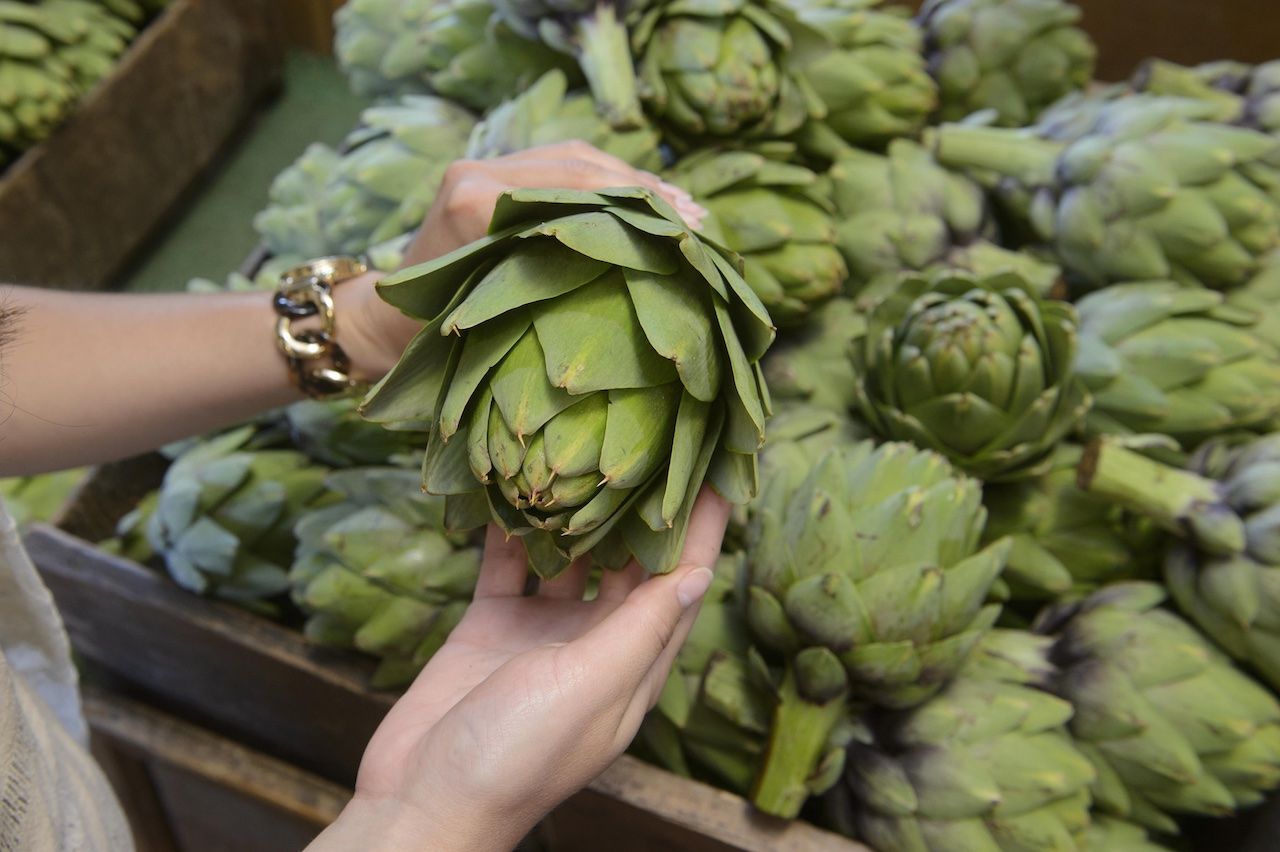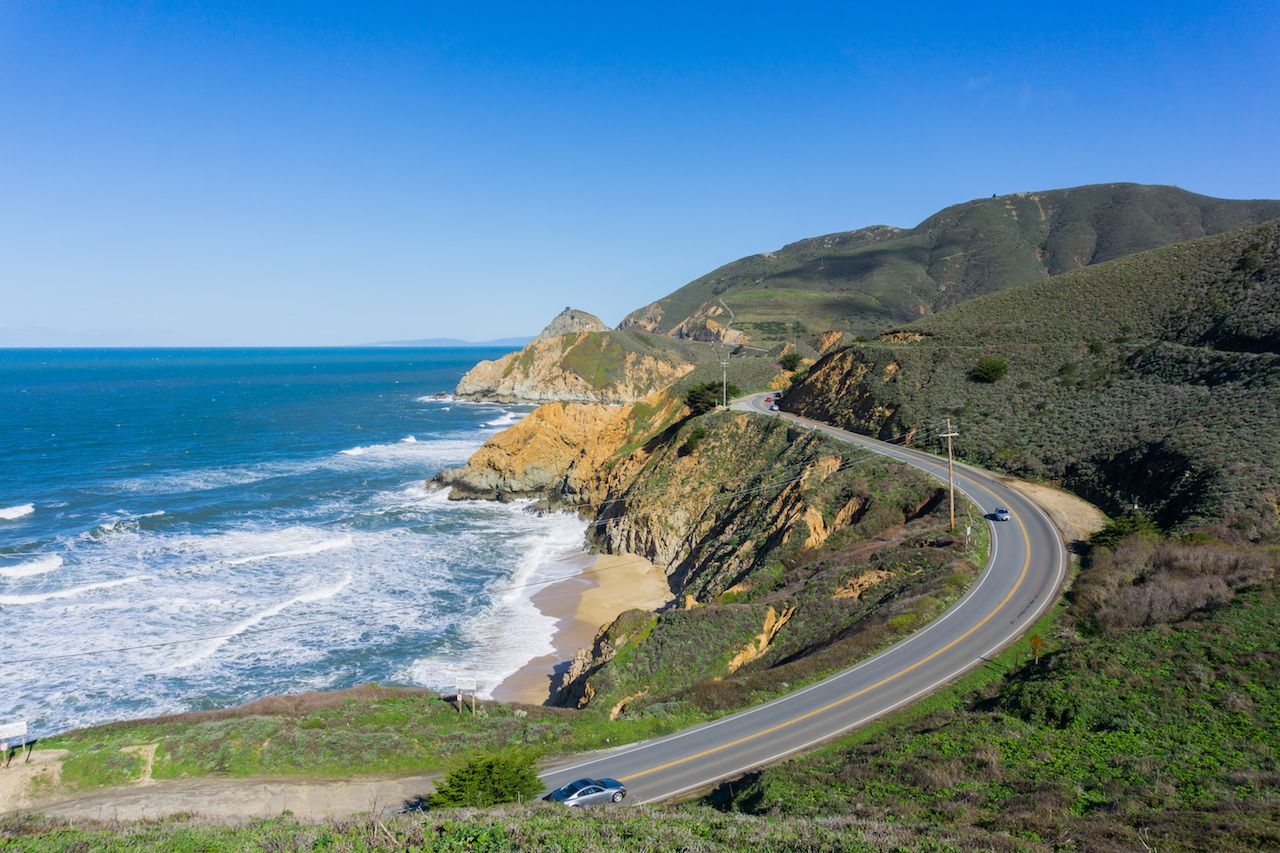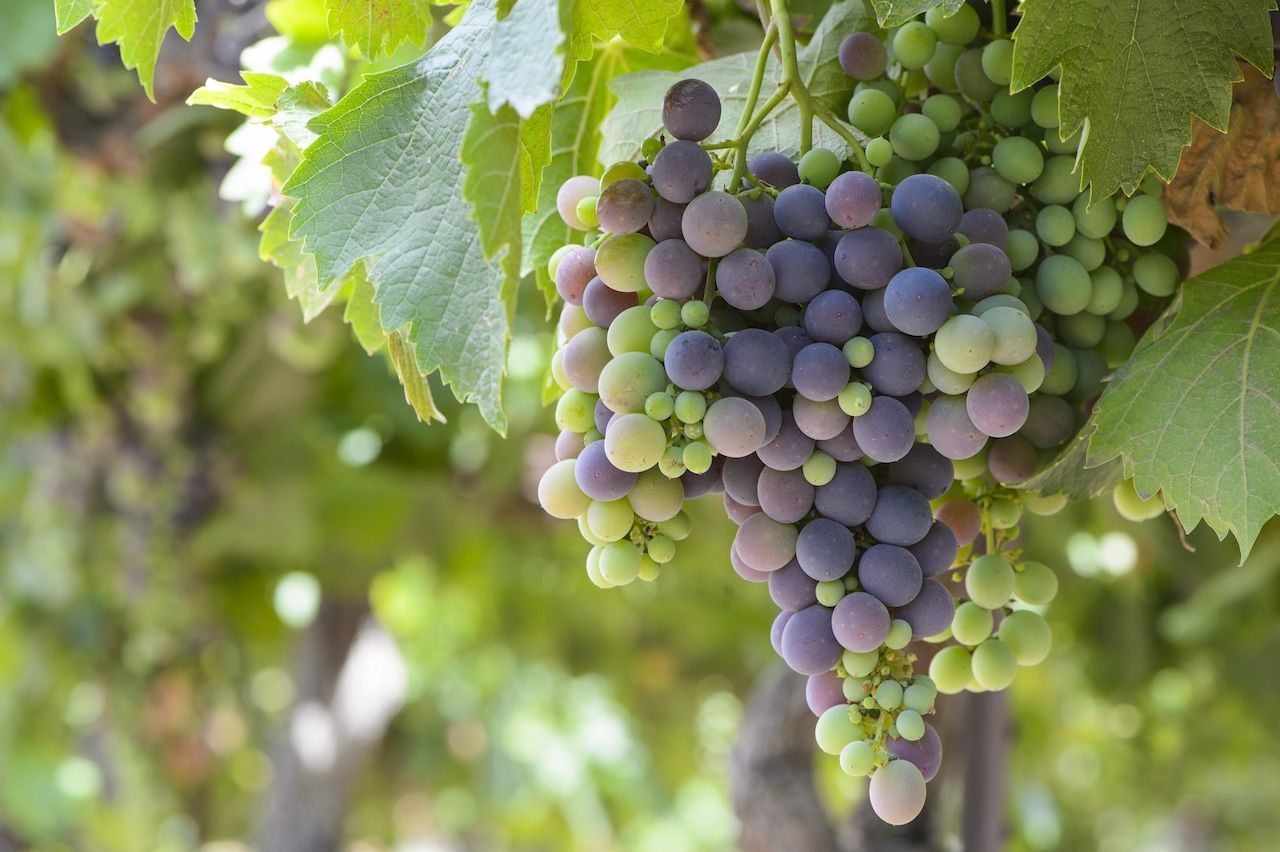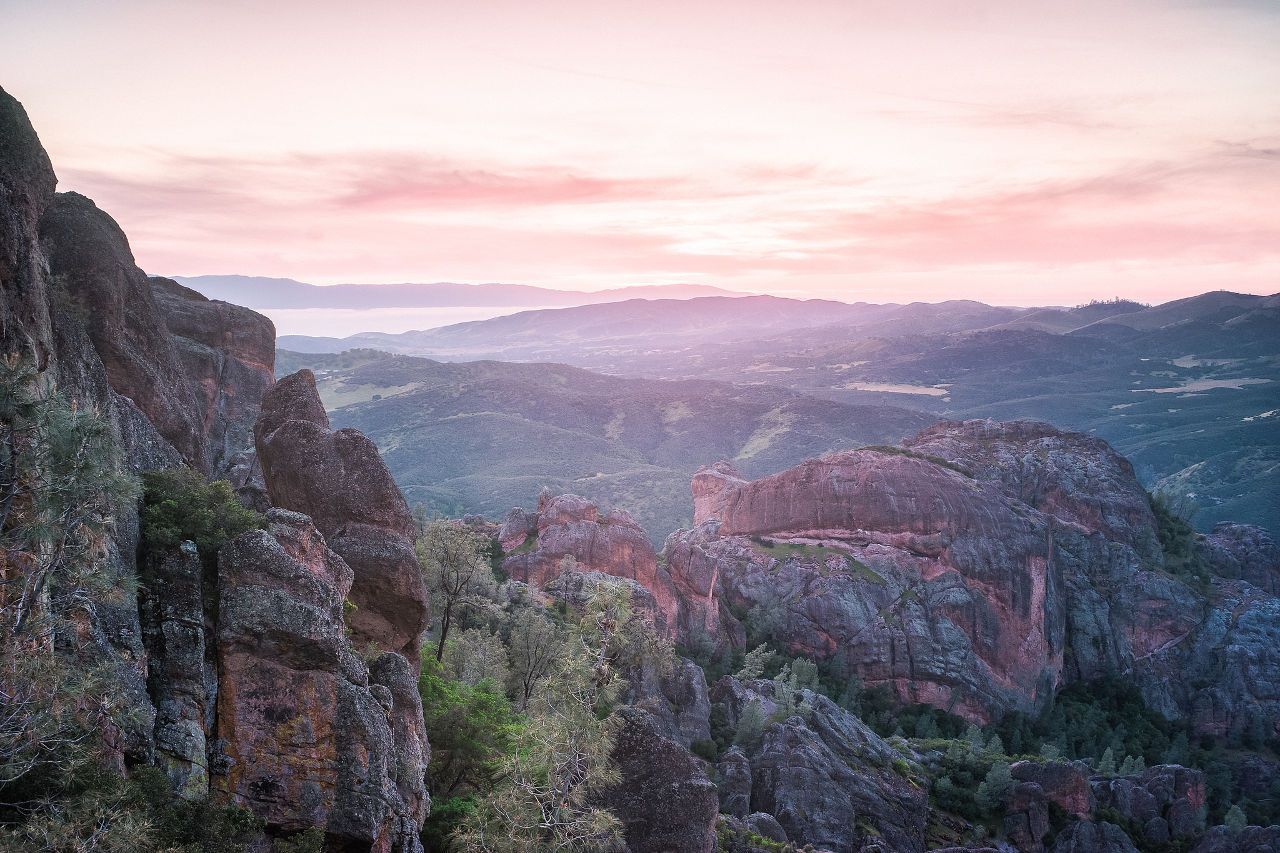MONTEREY IS MORE than a classic California destination with a wharf and whale-watching tours (though, yes, those are awesome). It’s also a county comprising a network of towns and villages, each with its own compelling backstory and intriguing quirks — not to mention the countless miles of sand and surf, the wineries, the clam chowder bowls, the tidal pools, the artsy festivals, and the monarch butterflies.
If you’re not convinced you should make Monterey County your next destination, here are 11 surprising facts about the region that will change your mind.
1. You’re welcome for the veggies.

Photo: DMT Imaging / SeeMonterey.com
Even if you’re the type that tries to hide your veggies under cheese or peanut butter, you’ve probably run across a smoothie, salad, or snack made with produce from the Salinas Valley. It’s said 70% of the lettuce produced in the US is grown in the rich, sprawling farmland found here. And with two of the other dominant crops of the region being leaf lettuce and strawberries, not to mention all the artichokes, we’re way into healthy eating.
Salinas has thousands of acres of agriculture, making sure it earns its nickname, “The Salad Bowl of the World.” But don’t scoff just yet, salad-eschewers. Vegetables aren’t the only produce coming out of our Mediterranean-like climate — we also grow some of the most coveted Chardonnay grapes in California, which means you can get your drink on, and get it on good.
2. We’re home to one of the most diverse tide pools in the world.
The Great Tide Pool (also known as Point Pinos) in Pacific Grove is not one pool, as the name implies, but a network of pools chained together around the peninsula. It’s home to snails, algae, hermit crabs, fish, and crustaceans, all of which make their great migration to these pools on a daily basis. And the tide pools welcome the inquisitive any time, so you can go during high tide and still experience our marine life in their natural habitat. Just remember to treat the animals and plants you find there with care and respect.
John Steinbeck spent a lot of time in his early writing career observing the mysteries of the pools, and later wrote about them in his book Cannery Row. Make time to check out his childhood home in Salinas at some point on your trip, but the Great Tide Pool is a perfect place to walk in his footsteps and see his creativity come to life.
3. “Scenic drive” is our middle name, and not just because of the coast.

Photo: Sundry Photography/Shutterstock
Ninety-nine miles. That’s how far our coastline runs, giving us a long stretch of amazing beach and surf. These coastal roadways are perfect for cruising with the top down, but if you’ve been there, done that, you’re in luck: We have way more than Highway 1.
The 17-Mile-Drive takes in Carmel-by-the-Sea, Pacific Grove, and Pebble Beach, with everything from ocean vistas with cute harbor seals to glimpses of Del Monte Forest. There’s a $10.25 entrance fee but no time limit, so you can picnic along the way or take your time sightseeing and stop for dinner — try The Bench, at The Lodge at Pebble Beach, which specializes in open-flaming cooking and features some of the best outdoor seating around.
Or take Carmel Valley Road, a 35-mile drive through wine country. Between inevitable stops at the many wineries, you’ll pass cattle ranches, sprawling valleys, and ultimately journey deep into the Santa Lucia Mountains. If inspiration strikes you, this drive can also be cycled. Just pop by Bay Bikes at the Carmel Barnyard to start your two-wheel adventure. (The views are even better sans windshield.)
4. Here, you can tee off at some of the world’s most famous golf courses.
Pebble Beach has eight golf courses, and they’re some of the most storied in the world. The PGA Tour, Champions Tour, and several US Open Championships have been held here. While that may be something you’ve heard before, our golf courses also aren’t just for the pros. Many of them are open to the public nearly every day of the year.
Bring your greenest jacket and try Poppy Hills Golf Course for a round set exclusively in the forest. Or hit up Spyglass Hill Golf Course for a characteristic 18-hole play on the ocean. You may not be swinging with the pros, but you’re almost certainly playing right before or after them.
5. Street addresses don’t exist in Carmel-by-the-Sea.
Carmel-by-the-Sea keeps things old-school cool. The village is one square mile, with uneven cobblestone streets and no stoplights. You’d be forgiven if you thought it was plucked straight from a storybook. But it gets better. There are no street addresses, either; instead, the homes are given names. Seabelle, Odyssey, Cypress Song, and Whale’s Tail are just a few of the cottages here, each with enough charm to warrant wandering the lanes and getting lost in what makes this community magical.
Restaurants are also without street numbers, but consider finding them your reward. For breakfast, head to Carmel Belle for dishes proudly featuring the products of local farmers and distributors. Then, after a day of browsing the many art galleries and historic sites, hit up Vesuvio, an Italian restaurant with a surprisingly extensive cocktail selection and relaxed rooftop lounge. If your nose doesn’t lead you to it, Google can definitely tell you the way.
6. We care for some incredibly rare marine species.

Photo: SeeMonterey.com
Though it has its origins as a sardine cannery, today the Monterey Bay Aquarium houses more than 35,000 marine species — in habitats designed for their health and well-being, mind you, not in tins. Talk about a turnaround! The aquarium is dedicated to preserving our planet’s incredible underwater life, which is why it was the first to grow California Giant Kelp, why it often has rare deep-sea and threatened fish in its exhibits, and why it runs Seafood Watch, a program that strives to educate the public on the importance of choosing responsibly farmed seafood.
Quite frankly, this is one of the most impressive aquariums in the country. Coming here feels like walking into a marine world — which makes sense, since it’s right on the ocean. When you’re done touring the ridiculously detailed exhibits, head out the back door to watch some seals. There’s plenty of room on the patio.
7. You can browse hundreds of vendors at the annual Moss Landing Antique Street Fair.

Photo: SeeMonterey.com
The Moss Landing Antique Street Fair is held the last Sunday in July. For one day, Moss Landing becomes a stop for all things old, quaint, and artisanal. Pottery and handcrafted birdhouses? We’ve got ‘em. Paintings, cuckoo clocks, and hunting knives? Those too. That teal iron-and-cork frame you saw at a Salvation Army five years ago and regret not buying? Probably. Plus hot dogs, loaded baked potatoes, beer, artichokes, roasted corn, a fish fry…you get the idea. Consider it a farmers market on steroids.
Admission is $5 per adult, and kids get in free. Parking is free at the South Fair entrance, and just like everything else in the area, you’re only ever a couple minutes’ walk from the ocean. When you’re antiqued out and filled up on strawberries, take a breather on the sand or in the water, and get back at it when you’re sufficiently prune-y.
8. We’re rapidly becoming California’s next top wine destination.

Photo: DMT Imaging / SeeMonterey.com
Scoot over Napa, step aside Sonoma. Named one of the “Top Ten Wine Travel Destinations” in 2013, Monterey County is no amateur vintner. There are wineries and tasting rooms in virtually every city in the county, including Marina, Salinas, Carmel-by-the-Sea, Carmel Valley, and Soledad.
If you’re not sure where to start, just drive from Monterey in any direction. Literally. You’ll find a winery or tasting room within 20 miles, guaranteed. If you need a starting point or just don’t want to choose, head over to A Taste of Monterey. It’s a block from the Monterey Bay Aquarium, and they’ve got a selection of 90+ local wines, bistro tapas like bacon-wrapped dates and Monterey crab dip, and — most importantly — intimate views of the ocean.
9. The iconic Bixby Bridge was built with prison labor.
Anyone driving Highway 1 south to Big Sur will eventually cross the iconic landmark known as Bixby Bridge. More than 250 feet tall, it’s one of the world’s highest single-span concrete arch bridges and is frequently, frequently photographed. Its beginnings weren’t quite as glamorous: In order to fill labor needs for the difficult project, convicts from San Quentin State Prison worked on the bridge. (It’s even said John Steinbeck helped with construction. What didn’t that man do?)
The result: one of the most stunning pieces of architecture in the state. Bixby Bridge is an icon of the California coast, and has been featured in TV commercials, music videos, the miniseries Big Little Lies, and as the subject of countless postcards. You’ve no doubt seen it without even trying. When you’re ready to see it in person, just remember to check the latest road closure info for Highway 1.
10. Yes, a town of 300 people can attract artists.

Photo: Rebecca Riddell for West End Celebration
With a population of 338 people, Sand City may be small, but don’t let anyone say they can’t throw a good party. Every August, art and passion come together in a blend of funky-fresh creativity during Sand City’s West End Celebration. Musicians, dancers, artists, poets, street performers, and foodies are put in the spotlight over a three-day weekend, and they certainly bring the fun.
Grab a drink, grab a friend, and spend an afternoon checking it out. Who knows, you might just get inspired to create some art of your own while you’re there. Not in town in August? No worries. Sand City runs art exhibits throughout the year, and this secret little spot makes for a good bucket list experience no matter the season or goings-on.
11. We have a healthy obsession with nature preserves.

Photo: Stanislov Sedov
Monterey County contains a mix of different climates and ecosystems: We have wetlands, grasslands, woodlands, mountains, salt marshes, and estuaries, and you can experience them all at our nature preserves and parks, of which there are a ton. Cases in point:
- Visit the Monarch Butterfly Sanctuary in Pacific Grove to see the monarchs’ autumnal migration to California.
- Just down the road from Carmel-by-the-Sea, take a morning hike through Point Lobos State Natural Reserve.
- Go kayaking at Moss Landing’s Elkhorn Slough Reserve, home to the second largest tidal salt marsh in the state.
- Frog Pond Wetland Preserve in Del Rey Oaks is a great spot for kids with a budding interest in wildlife. It’s a 17-acre haven for birds and, you guessed it, frogs.
- Even grander, we’ve got Pinnacles National Park, upgraded from monument status in 2013. It has the highest concentration of different bee species — nearly 400 — of anywhere on the planet, and the ancient volcanoes it rests on make for some great hiking opportunities.
Because of the area’s natural diversity, Monterey County is a little hard to categorize. But when you’re here, you can’t forget you’re here. This is one of the most attractive regions on the California coast, and yet one with a lot of stories left to tell.

